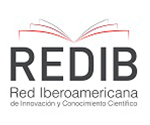Urbanization and Community Commitment: Five Case Studies on Social Infrastructure in Education and Health
Keywords:
geographical accessibility, public education, public health, welfareAbstract
In this paper, we characterize and assess the geographical accessibility of free public housing projects - VIS and savers public housing - VIPA to urban public health and education facilities in five cities: Barranquilla, Soledad, Malambo, Valledupar and Soacha. Four indicators of accessibility are used: the average distance, the minimum distance and the amount and percentage of facilities within a two- and four- kilometer radio. As a result, it is found that the geographical accessibility is low relative to some international standards, especially in the case of health. In addition, free housing projects registered a lower availability than those for savers in most of the cases.Downloads
Published
Issue
Section
License
I, ____________________________________________, author of the work and/ or article, adult, residing in the city of _________________, bearing the Identity Card/Passport n.° ______________________, issued in _______________________, in command of his/her/their physical and mental faculties, party hereinafter referred to as AUTHOR, signs the following authorization so the reproduction, publication, communication and distribution of the work can be done, under the following terms:
1. That, regardless of existing legal regulations due to the relationship of the parties to this contract, and any other existing legal presumption, the parties agree that the AUTHOR authorizes the Universidad del Norte, with the purpose of reproduce, publish, communicate and distribute the material called in the Revista de Economía del Caribe.
2. That such authorization apply to the copyright of the work, by any means, known or to be known, the public communication of the work, and the distribution of the work, directly or by third parties, purely educational purposes.
3. The AUTHOR undertakes to inform and declare the existence of this authorization and to preserve the right of the journal Revista de Economía del Caribe to the first publication of the work.
4. The AUTHOR states that the article is original and his/her/their exclusive creation, there being no impediment of any kind for the authorization he/she/they is/are giving, responding thereto by any action: claim, plagiarism or any other type of complaint that might arise about.
5. That such authorization is granted for free.
6. The moral rights of the author on the article correspond exclusively to the AUTHOR, in virtue of which, the Universidad del Norte agrees to expressly and rigorously recognize and respect them.





























